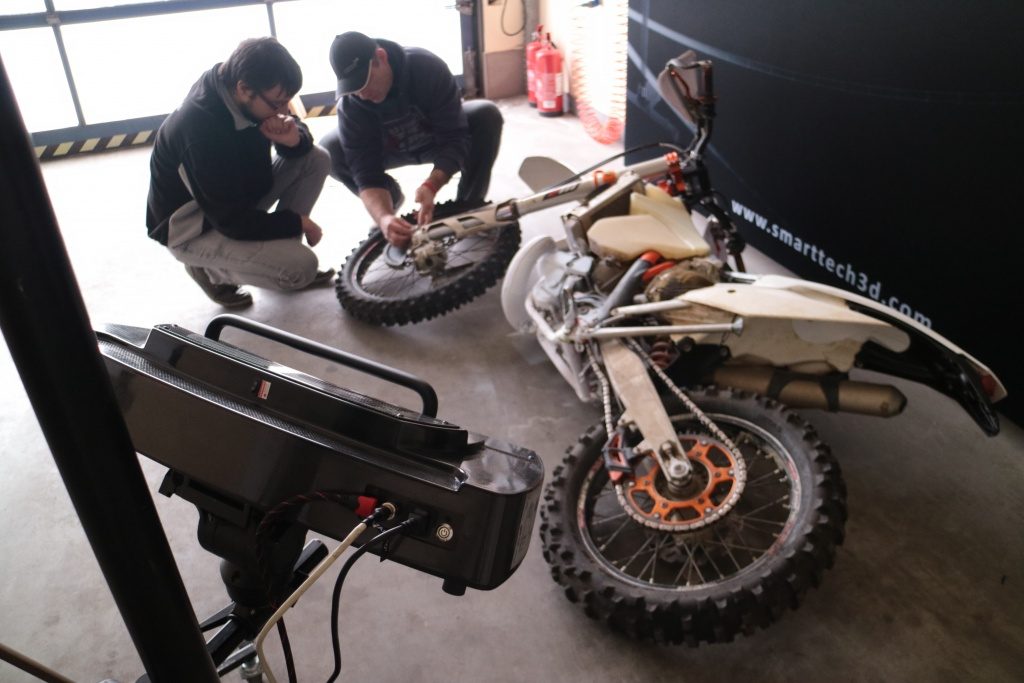This is a guest post in our series looking at the future of 3D Printing. To celebrate 5 years of reporting on the 3D printing industry, we’ve invited industry leaders and 3D printing experts to give us their perspective and predictions for the next 5 years and insight into trends in additive manufacturing.
Christopher Gebarski, M.Sc. (Eng.) is the Chief Executive Officer at SMARTTECH Ltd. The company was founded by a group of scientists from the Warsaw University of Technology under the leadership of prof. Malgorzata Kujawinska. For over 17 years SMARTTECH has been conducting R&D and improving the optical method of measurement using structured-light.
3D printing the next 5 years by Christopher Gebarski CEO SMARTTECH Ltd
While personal 3D printers are sure to influence consumers’ imagination, the future of 3D printing lies primarily in industrial use, that is in rapid prototyping and the creation of parts and tools. Slowly but steadily this sector is followed by the medical industry, which increasingly uses 3D printing to create implants and prosthetics.
As a manufacturer of 3D scanners we have noticed the emergence of ecosystems in which 3D printers work alongside measuring devices and are complementing each other. With quality control and reverse engineering companies are able to accelerate the prototyping process even more by first obtaining a virtual model using a 3D scanner and then being able to 3D print it. A 3D scanner, in this case, is also able to verify the quality of the prototype by indicating all the deviations in comparison to the CAD model. In the coming years we expect a deepening integration of 3D printing and 3D scanning technologies.
To obtain proper output you need a proper input
Five years ago, if we wanted to persuade an industrial customer we had to thoroughly explain to him what 3D scanning was and how it would positively affect his business by providing a precise quality control and the ability to conduct reverse engineering. Everybody knew what 3D printing was but few seemed to be able to understand something that was so simple, at least in theory, – in order to print something, you need a project. And that is costly. 3D scanners allow us to reduce these costs and that knowledge is fortunately nowadays understood by industrial customers. Today, customers don’t start by asking what is a 3D scanner and instead are interested in the scanners parameters. This suggests that product awareness has increased significantly.
3D scanners are also penetrating the consumer market in various ways. For example dedicated equipment or modules and applications that extend the capabilities of popular tablets. Customers use them to easily acquire CAD designs, although the consumer 3D scanner industry suffers from similar problems to the ones endured by cheap 3D printers. Obtaining a precise CAD model is difficult without the use of a professional 3D scanner, which obviously affects the amount of man-hours needed for the post-processing as well as the quality of the of the finished project. To obtain proper output you need sufficiently good input.

It’s not just 3D printing that is evolving
Just as 3D printing is improving, so is 3D scanning. Today, measurement and metrology are everywhere. The increasingly complex structure and freeform shape of objects have forced the evolution of measurement systems from the traditional contact measurement to the fast and contactless optical measurements, that is 3D scanning, with a metrologically validated accuracy. When speaking about 3D scanners we cannot forget that they are not only used to obtain a model for 3D printing and rapid prototyping but also for actual measurements.
The future of 3D scanners depends on providing customers with devices characterized by high resolution and fast scanning times. These are especially important for the medical industry which is steadily increasing use of 3D technologies every year. The 3D scanning process itself is becoming more automated and because of that is easier to use. This allows customers to focus on applications, rather than having to learn the metrological knowledge needed in the past to operate the equipment. An ideal 3D scanner should be able to do most operations automatically. There is also the problematic matter of calibration and the setting-up of the 3D scanner. It is a difficult and time-consuming operation which fortunately can be omitted if a manufacturer allows for a factory calibration of the 3D scanner.
The manufacturers of 3D scanners in the future cannot neglect the aspect of safety if they are to offer the most advanced solutions tailored to the needs of various industries. While devices using laser technology in the measurement can be used, for instance, in the manufacturing industry the future of the 3D measurement lies in LED structured-light. This technology is very fast and safe for all to use.

This is a guest post in our series looking at the future of 3D Printing, if you’d like to participate in this series then contact us for more information.
For more insights into the 3D printing industry, sign up to our newsletter and follow our active social media channels. Let us know your thoughts about this perspective on the future of 3D printing in the comments below.
More information about SMARTTECH is available here.



